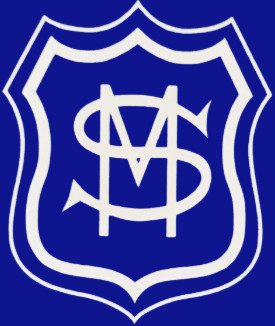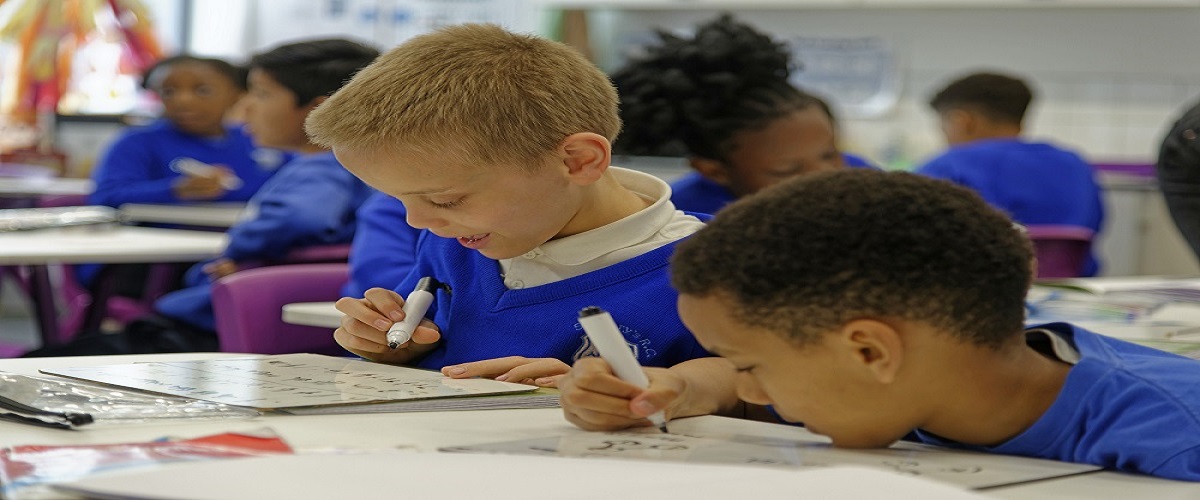Writing
Writing is a vitally important skill for all children to be successful in both school life, home life and in community life. It is a process that is made up of a number of components, including transcription (spelling, typing, and handwriting), text generation (ideas, words, and sentence construction), and learning behaviours (such as attention, planning, monitoring, and reviewing).
Our writing provision focuses on children becoming skilled at each of these components of writing along with regular opportunities to coordinate these skills to become confident, independent writers. It has been designed to enable all children to write both creatively for enjoyment (e.g. narratives and poems) and for a specific purpose (e.g. instructions and letters) across a variety of fiction and non-fiction text types.
Where possible, we give the children real purposes to write for, chances to share their writing with an audience and many opportunities to celebrate their work in order to motivate them as young authors.
Our writing curriculum is carefully and thoughtfully structured, follows the NC programme of study. It is then further enhanced by personalised punctuation and text type progressions. Our programme covers a broad range of both fiction and non-fiction genres and uses a range of stimuli, linking to reading texts, local context, school trips and visitors, current affairs, film, multimedia/technology and a range of cross-curricular content, e.g themes studied in History, Geography, PSHE, R.E, Science where and whenever possible. Our aim is that through well-planned, motivational, relatable activities, our pupils will develop into competent, creative writers who can write clearly and coherently, for a range of purposes, and for a variety of audiences, effectively conveying meaning for communication and effect.
We expect our pupils to become competent in the arts of speaking and listening. Activities involving discussion, presentation, demonstration, drama, role-play and debate fully complement both our reading and writing programmes, providing opportunities for our pupils to wholly immerse in their learning, cement their knowledge and understanding and allow for the best possible outcomes.
It is essential pupils develop competence in both transcription, (spelling and handwriting) and in composition. Effective composition involves articulating and communicating ideas, and then organising them coherently for a reader. Pupils will understand that this requires clarity, awareness of the audience, purpose and context, and an increasingly wide knowledge of vocabulary and grammar. Pupils are expected to develop fluent, legible and, eventually, speedy handwriting.
1. Teaching Writing
As outlined above, writing composition is intrinsically linked to pupils’ reading and experience. Giving pupils a reason to write, and where possible, someone to write for, can support effective writing and provide opportunities to teach pupils how to adapt their writing for different audiences and purposes. At St Mary’s, texts are thoughtfully selected, and mapped out across the year, ensuring that a range of traditional and modern examples are chosen, representing the diverse local context of our school, and taking into account both current and historical social and cultural influences.
EYFS
The development of children’s spoken language underpins all seven areas of learning and development. Children read and will be read to throughout the day, they will engage actively in stories, non-fiction, rhymes and poems. They are provided with extensive opportunities to use and embed new words in a range of contexts.
Children will listen attentively during reading sessions and respond to what they hear with relevant questions, comments and actions. They are expected to make comments about what they have heard and ask questions to clarify their understanding. They will be able to hold conversations with adults and their peers whilst learning and are expected to participate in discussions, offer their own ideas and use recently introduced vocabulary.
Children will offer explanations for why things might happen and talk about their ideas, feelings and experiences using full sentences. This includes using past, present and future tenses and a variety of conjunctions.
Children in the EYFS will demonstrate an understanding of what has been read to them by retelling stories and narratives, anticipating key events in stories. They should understand vocabulary that has recently been introduced during discussions about stories, non-fiction, rhymes and poems and during role-play. Children in the EYFS will secure their understanding of letters and sounds and read words and simple sentences, that are consistent with their phonic knowledge.
We introduce Pie Corbett’s story telling actions and story mapping techniques in the early years to support the children’s ability to retell a story orally and through action, and to support the development of young children’s writing composition skills.
Children in the EYFS will be expected to write recognisable letters, most of which are correctly formed and to spell words by identifying the sounds in them, representing the sounds with letters. They will learn to write simple phrases and sentences that can be read by others.
Please click here for our EYFS Curriculum.
KS1 and KS2
Writing composition in KS1 and KS2 at St Mary’s is made up of the following components:
- Planning
- Pre-writing activities and drafting
- Revising and editing
- Publishing
Pupils are encouraged to use a range of strategies to support each component of the writing process.
Teachers model how, when and why pupils should use each strategy and support pupils to practise and apply improvements, via regular feedback. When appropriate, and according to need, teachers gradually reduce support as pupils increasingly use writing composition strategies independently. We build on Pie Corbett’s story telling actions and story mapping techniques in ks1 to support the children’s ability to retell a story orally and through action, and to support the development of young children’s writing composition skills.
Lesson sequences are comprised of a carefully considered series of word/vocabulary, sentence/grammar and text related activities, with the aim of schema building to cement pupils’ knowledge and skills and to improve their written fluency.
Throughout the school we use a system for teaching sentence structures developed by the educational specialist Alan Peat. Children are taught how to use Alan Peat’s, ‘Exciting Sentences’, which enable pupils to use a variety of sentence types when composing a piece of writing, ensuring they ‘hook’ the reader’s curiosity and interest.
The sentence types act as sentence stems, again helping to build pupils’ schema. By familiarising themselves with the sentence types over time, pupils first become fluent with set words or phrases, then the structure of the clauses and sentences themselves and finally with an expanding range of vocabulary and grammar. The sentence types develop pupils’ creativity, reinforce explicit knowledge of grammar, punctuation and vocabulary and provide repeated opportunities to practice sentence construction and sentence combining.
Some sentence types are more appropriate to non-fiction, and others to fiction writing. Through whole class reading and writing (including modelled, shared and peer writing), pupils are routinely exposed to a variety of sentence types, linked to different genres, as they journey through the school. Through regular modelling and practice, pupils are then able to select and apply appropriate sentences to their independent writing.
As vocabulary increases, pupils will learn to understand the relationships between words, how to understand nuances in meaning, and how to develop their understanding of, and ability to use, figurative language. Pupils will learn how to work out and clarify the meanings of unknown words and words with more than one meaning. They will learn the correct grammatical terms in English and that these terms are integrated within teaching.
Pupils progressively learn how to use punctuation effectively within their own writing, using Alan Peat’s punctuation poster, which builds on the pupils’ prior knowledge and skills as they move through each year group.
Please click here for Alan Peat’s Punctuation Poster.
Please click here for Whole School Punctuation Progression Overview.
Spelling, punctuation and grammar skills are taught discretely within whole class English lessons, and further embedded during modelled, shared and guided writing lessons.
Our spelling progression follows the NC programme of study, with a focus on learning year group specific word patterns, common exception words and statutory word lists for Years 3 & 4 and 5 & 6. Whilst phonic knowledge continues to underpin spelling after Key Stage 1, teachers still draw attention to GPCs that do and do not fit in with what has been taught thus far. Pupils are also taught to understand the role of morphology (words structure) and etymology (word origin) and the relationships between meaning and spelling, where these are relevant.
In addition to this, pupils are set weekly spelling practice homework from Reception upwards.
We encourage all pupils to take pride in the presentation of their written work. As well as striving to achieve high standards in terms of the content of their work, pupils also need to develop a neat, joined handwriting style, which is consistent throughout the school. We use Nelson Thorne’s handwriting programme across the school, which is designed to help all children develop a confident, legible and personal handwriting style and meet higher curriculum expectations. The programme includes resources for pattern practice and motor skills, fun activities to bring handwriting to life and an online subscription to help implement the programme in class. In order to expose children to the scheme as much as possible, we use the Nelson Thorne (NTF) font in all writing accessible by the pupils e.g. when demonstrating writing, labelling books/displays and modelling writing both on the boards and when marking in books.
2. Children at Risk of Falling Behind
We focus on setting common, challenging learning outcomes for all children and scaffold the journey towards them for specific groups and individuals. All children have access to resources such as recordable whiteboards, word mats and visual prompts as well as support from peers and adults. Nevertheless, it is likely that a small number of pupils will require additional support. Our SEND lead works closely with teaching staff to accurately diagnose capabilities and difficulties in order to match pupils to appropriate, evidence informed interventions that target specific areas of difficulty.
3. Assessment
Teachers are assessing the children’s writing all the time in order to provide next-step opportunities for the children. See our Feedback policy for more information.
Statutory assessment frameworks are used in Nursery, Reception, year 2 and year 6 and staff attend borough moderation annually.
In Key Stage 1 and 2, specific writing tasks are planned in for children to demonstrate their attainment in writing. We use borough devised writing checklists to assess the children’s writing. Moderation and standardisation meetings are scheduled in regularly within the school and across the federation.
Please click here for The Website Driver Texts and Writing Assessment Map.



